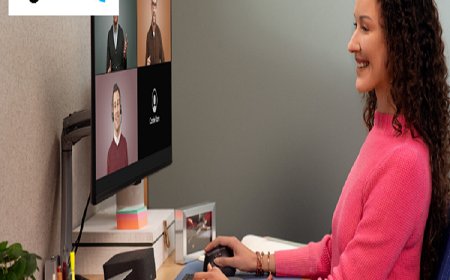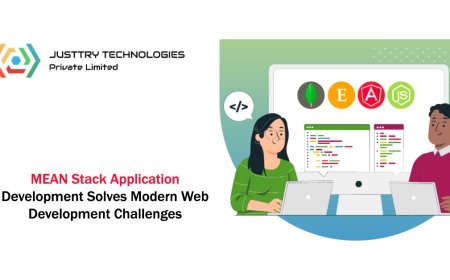The Future of Shop Drawings: Trends and Digital Innovations to Watch

In todays fast-evolving construction and manufacturing landscape, shop drawings are no longer just static documentsthey're becoming dynamic, data-rich tools that drive precision, collaboration, and efficiency.
As digital technologies continue to reshape how buildings and components are designed, fabricated, and assembled, the future of shop drawings is being redefined. From 3D modeling and BIM integration to cloud-based collaboration and AI-powered automation, a wave of innovation is transforming the traditional drafting process into a streamlined digital workflow.
In this blog, well explore the emerging trends and cutting-edge technologies that are shaping the future of shop drawingsand what professionals in architecture, engineering, and construction should watch closely to stay ahead.
The Evolution of Shop Drawings
Shop drawings have come a long way over the years. In the past, they were made by hand using pencils, rulers, and large sheets of paper. Drafters had to spend hours drawing each part carefully and making changes was a slow process. These hand-drawn sketches helped builders understand how different pieces of a project should be made and installed.
As technology improved, the drafting process changed. With the introduction of computers and software like AutoCAD, drafters could now create shop drawings faster and with more accuracy. Making edits became easier, and sharing the drawings with others could be done through email or digital files.
Today, shop drawings are becoming even more advanced. Modern tools like Building Information Modeling (BIM) allow drafters to create 3D models instead of just 2D drawings. These models help teams see how everything fits together, reducing mistakes on-site. Digital shop drawings also make it easier for architects, engineers, and contractors to work together in real-time, even if they are in different locations.
Cloud technology, automation, and artificial intelligence (AI) are also playing a big role in the evolution of shop drawings. These tools help save time, reduce errors, and improve the overall quality of the project.
In short, shop drawings have evolved from hand-drawn plans to smart digital tools. This change is helping the construction and manufacturing industries work more efficiently, accurately, and collaboratively than ever before.
Emerging Trends Reshaping Shop Drawings
Shop drawings are changing quickly because of new technology. These changes are making the work easier, faster, and more accurate for designers, builders, and manufacturers.
One big trend is the use of 3D modeling. Instead of flat 2D drawings, many companies now use 3D models to show how parts and materials fit together. These models give a better view of the final product and help everyone understand the design more clearly.
Another important trend is Building Information Modeling (BIM). BIM allows teams to work together on the same digital model. Architects, engineers, and contractors can add their parts to one shared file. This reduces mistakes and helps teams solve problems early, before construction begins.
Cloud-based collaboration is also growing. With cloud platforms, teams can access shop drawings from anywhere. They can leave comments, make changes, and share updates in real-time. This saves time and keeps everyone on the same page.
Automation and AI tools are starting to help with creating shop drawings. These tools can quickly generate views, dimensions, and notes, reducing manual work. This helps save time and lowers the chance of errors.
Lastly, digital markups and QR codes are being added to shop drawings. These let workers view important information on tablets or phones right on the job site.
These trends are making shop drawings more powerful and useful. As technology continues to improve, shop drawings will keep getting smarter and easier to use.
Industry-Specific Innovations
Different industries are using new tools and methods to improve how they create and use shop drawings. These changes are helping teams work better and build faster.
In the architecture and construction industry, digital tools like BIM (Building Information Modeling) have become very popular. BIM allows all team membersarchitects, engineers, and contractorsto work on one shared 3D model. This helps them catch problems early and make better decisions before building begins.
The millwork and cabinetry industry is also seeing big changes. Special software can now create detailed shop drawings for custom furniture and cabinets. These drawings include every cut, joint, and material, making it easy for manufacturers to follow. Some software also connects directly to CNC machines, helping turn designs into real products faster.
In the mechanical, electrical, and plumbing (MEP) fields, new software creates smart shop drawings that include not just design, but also data like sizes, connections, and performance. This helps workers install everything the right way, reducing delays and mistakes on the job site.
The steel and metal fabrication industry is using 3D modeling tools to design complex parts with high accuracy. These models can also be used for automated cutting and welding, saving time and reducing waste.
Each industry has its own needs, but all are using technology to make shop drawings more detailed, accurate, and easy to use. These industry-specific innovations are helping to improve quality, save time, and reduce costs across the board.
Challenges in Adopting New Technologies
While new technologies are making shop drawings better and faster, many companies still face challenges when trying to use them. Switching from old methods to digital tools is not always easy.
One big challenge is cost. Buying new software, computers, and training programs can be expensive. Small companies may not have enough money to invest in these tools right away.
Another issue is the learning curve. People who have been using traditional methods for many years may find it hard to learn new software. It takes time and practice to become comfortable with digital tools like BIM or 3D modeling software.
Resistance to change is also common. Some workers prefer the old ways of doing things because they feel safe and familiar. They may worry that using new technology will slow them down or cause mistakes.
There are also technical problems. Sometimes software has bugs, or files dont open correctly on all devices. Poor internet connections can also make cloud-based work harder, especially on job sites.
Lack of skilled workers is another challenge. Not everyone knows how to use advanced tools, and it can be hard to find or train employees who do.
Even with these problems, more companies are slowly adopting new technologies. They know that once these tools are in place and people learn how to use them, the long-term benefitslike saving time and reducing errorscan be very big. Patience and proper planning are key to overcoming these challenges.
The End Note
The world of shop drawings is moving forward at a fast pace, driven by digital technologies that are making the design and construction process smarter, faster, and more connected. From hand-drawn sketches to intelligent 3D models, the evolution of shop drawings shows just how far the industry has come. With trends like BIM, 3D modeling, cloud collaboration, and AI tools leading the way, teams can now work with more accuracy and efficiency than ever before.
Industry-specific innovations are further pushing the boundaries, offering tailored solutions for architecture, millwork, MEP, and metal fabrication. Each sector is using digital tools to cut down on errors, save time, and deliver better results.
However, adopting these new technologies also brings challengessuch as high costs, the need for training, and resistance to change. Still, with the right mindset and planning, these hurdles can be overcome.
The future of shop drawings is digital, collaborative, and full of possibilities. Companies that embrace these changes today will be better prepared for the demands of tomorrows construction and manufacturing world. Now is the time to invest in innovation and build smarter, not harder.





























